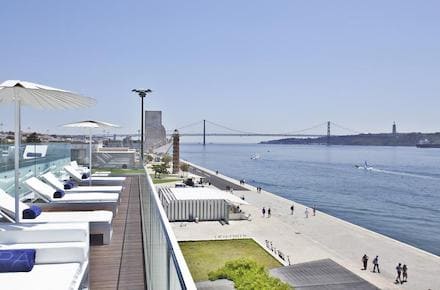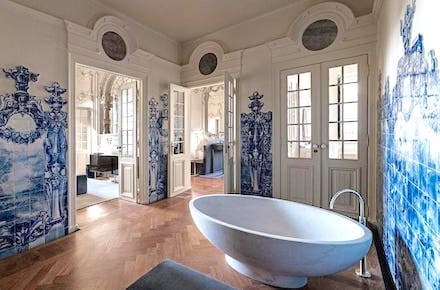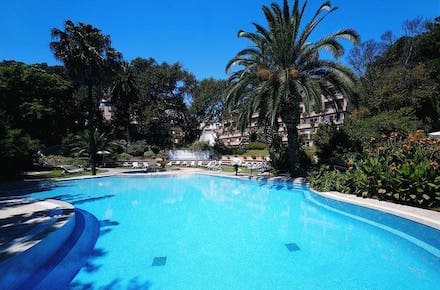Tile Museum
Rua da Madre de Deus, 4 (Xabregas)
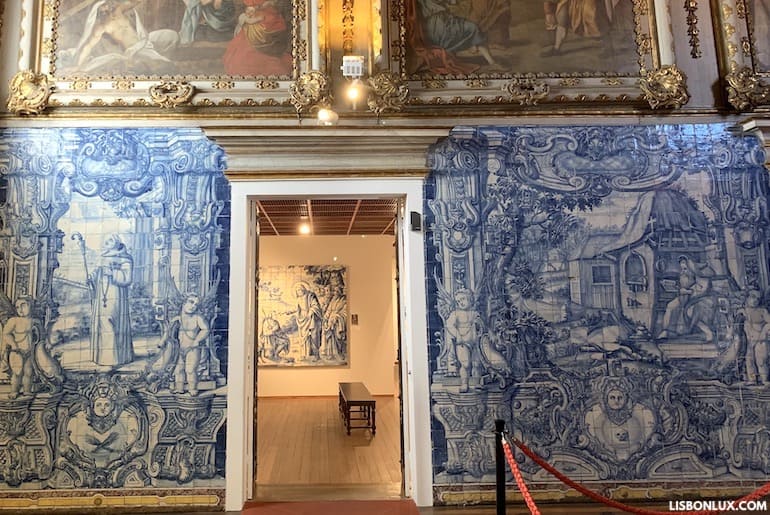
Housed in a magnificent building from the 1500s, this museum showcases the art and production of decorative tiles from the 15th century to the present. Its precious collection includes several Portuguese and foreign masterpieces, making it a world-class institution. The permanent exhibition illustrates the long history of tiled art and the influences from various cultures, from the Arabic to Italian-Flemish, Spanish, Dutch and Asian.
Fronteira Palace
Largo de São Domingos de Benfica, 1 (Benfica)
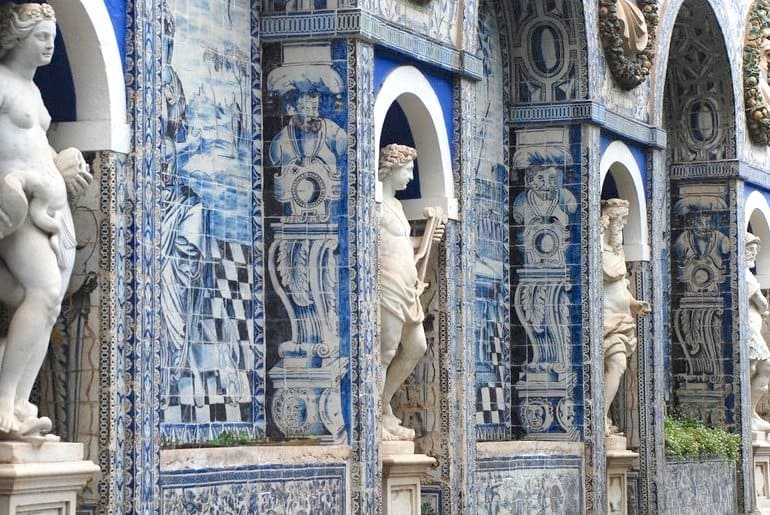
Most of this palace's outstanding tile collection dates from between 1660 and 1670, covering much of the interior and the impressive garden outside. It's one of the most extraordinary tiled works of art in the world, mixing Portuguese and Dutch examples next to various decorative sculptures.
São Vicente de Fora Monastery
Largo de São Vicente (Alfama)
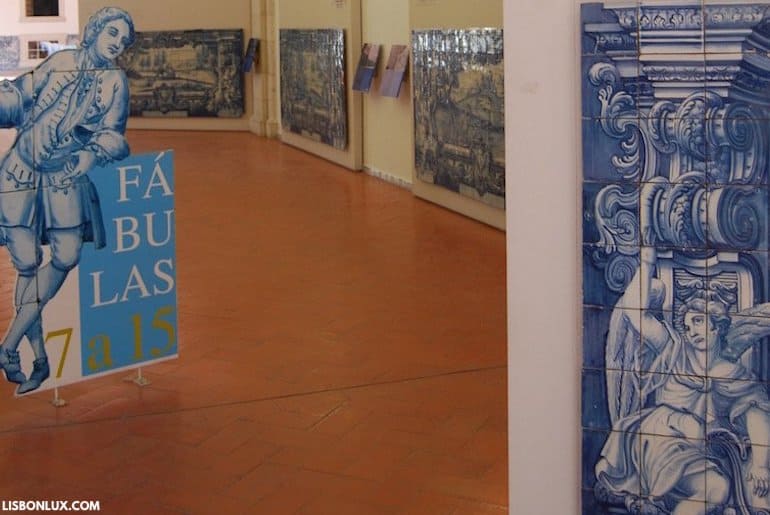
This monastery has the most extensive collection of baroque tiles in the world, including a curious series of 38 panels illustrating the fables of La Fontaine. Another highlight is the panel depicting King Afonso Henriques' siege of Lisbon.
Fábrica Sant'anna
Calçada da Boa Hora, 94B (Belém) / Rua Alecrim, 95 (Chiado)
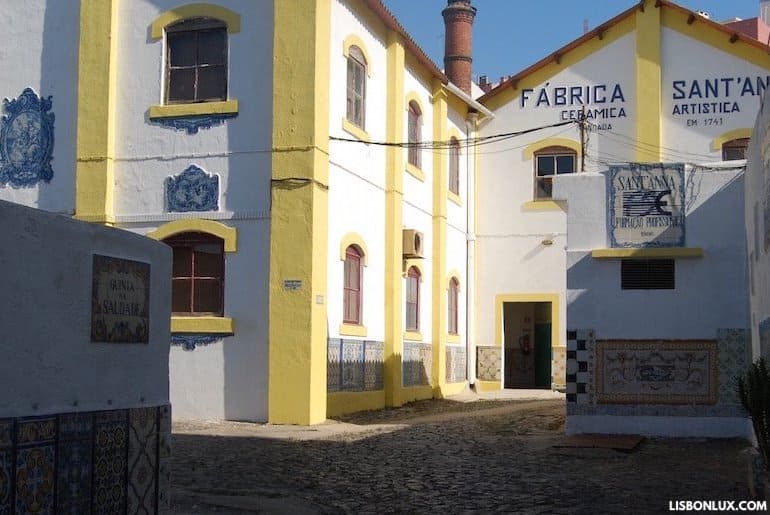
It's one of the main factories in the country (founded in 1741) and can be visited, allowing you to watch the artists in their hand-painting process. It also has a shop in Chiado, with (re)productions that are exported worldwide.
Fábrica Viúva Lamego
Largo do Intendente, 25 (Intendente)
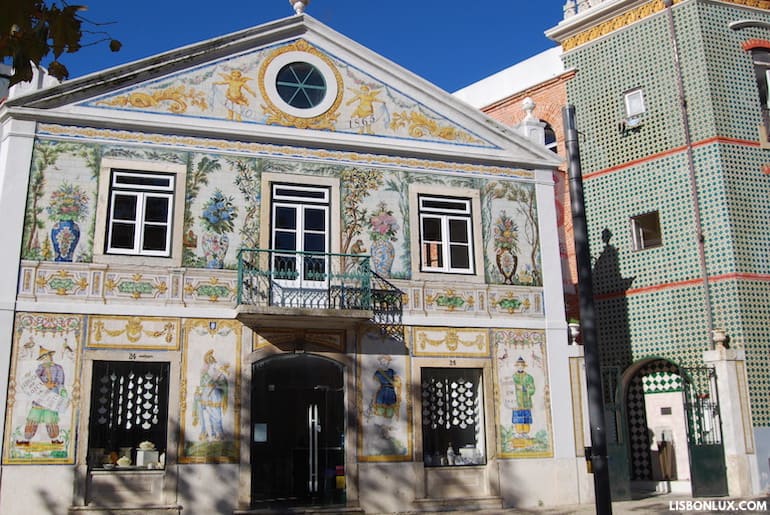
The Viúva Lamego factory has produced a large part of the countless tiles found in Lisbon and around the country. Its shop's building on Largo do Intendente is one of Lisbon's biggest curiosities, with its façade completely covered in colorful tiles.
Cardaes Convent
Rua de O Século, 123 (Príncipe Real)
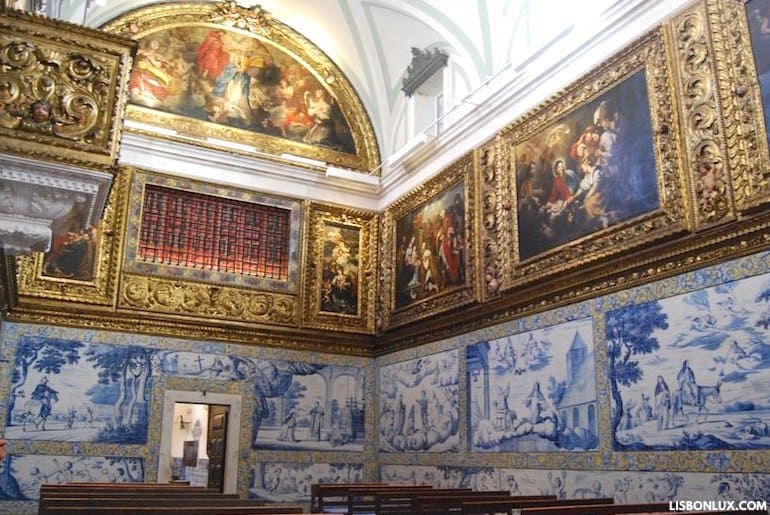
This convent has an important group of eleven figurative blue-and-white tile panels dating from 1692. They were created by Dutch artist Jan van Oort (of one of Amsterdam's leading workshops at the time), and tell the story of St. Teresa of Avila, who was venerated here. Other works (of Portuguese production) can be seen in a guided tour of the building.
Sintra National Palace
Sintra
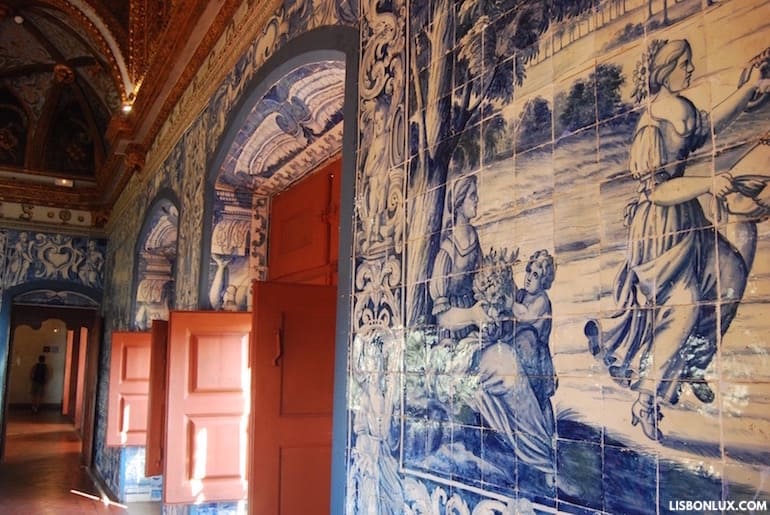
This is one of the few surviving medieval royal palaces in the world, and contains the biggest collection of hispano-arab tiles (from Seville, Spain) in Europe. Its Sala dos Brasões (Coat-of-Arms Room) also has an important collection of baroque tiles, created by one of the main Portuguese artists of the 18th century, simply known as Master P.M.P.
Pimenta Palace
Campo Grande, 245 (Avenidas Novas)
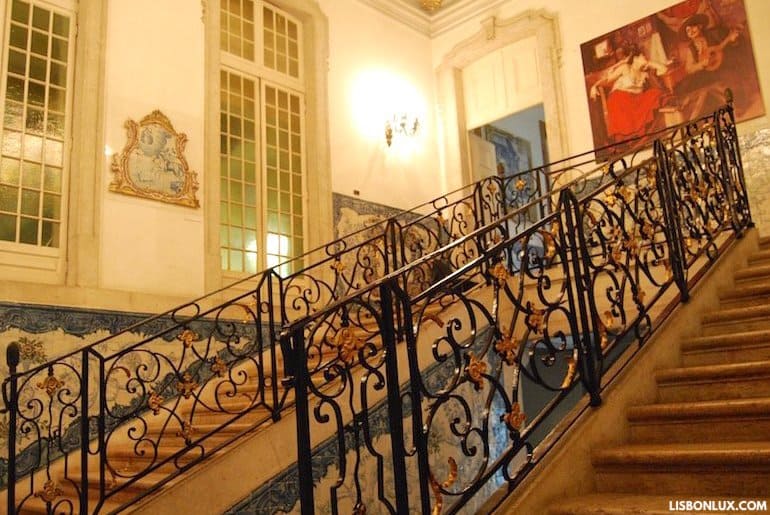
Pimenta Palace, built in the 18th century, is now part of the Lisbon Museum , and features a series of mostly blue-and-white tile panels. Many are part of the building, others belong to the museum's collection. The majority is of the Baroque and Rococo periods, including those of the old kitchen with images relating to fishing and hunting, and with an African woman preparing fish. In other rooms and down the grand staircase are notable polychrome tiles and chinoiserie panels.
Queluz National Palace
Queluz
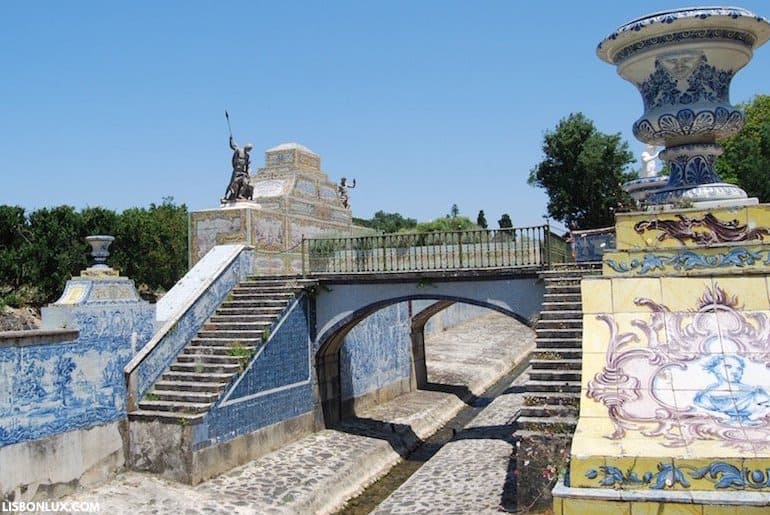
This palace is best known for its beautiful gardens and rococo architecture, but also has a remarkable tiled attraction. That's the tiles canal, decorated in 1756 with blue-and-white panels.
Inside, the Corredor das Mangas room is lined with neoclassical polychrome tiles depicting the seasons, the continents and scenes from classical mythology.
The Shops
Loja dos Descobrimentos - Rua dos Bacalhoeiros, 14B (Alfama)
Solar - Rua Dom Pedro V, 68-70 (Príncipe Real)
Dorey - Rua do Alecrim, 68 (Chiado)
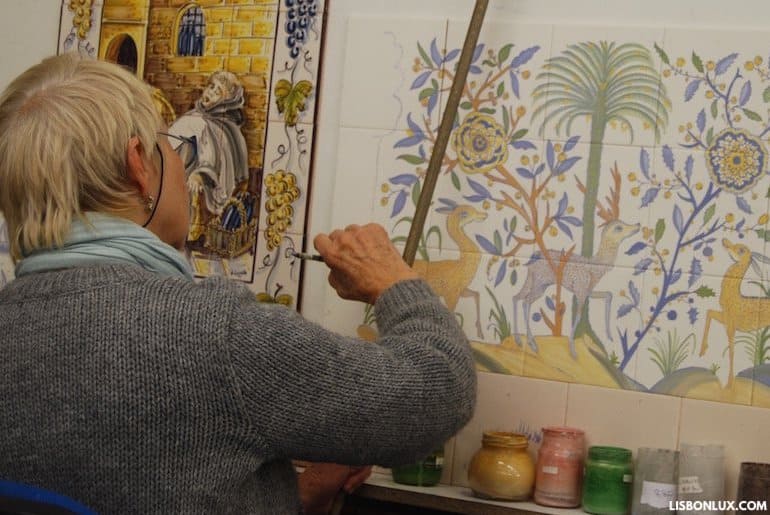
Be sure to visit the tile shops in the city, offering original pieces and reproductions at various prices. Solar is more like a museum of antique tiles, while Loja dos Descobrimentos presents more affordable reproductions. At Dorey you'll find a good mix of antiques and reproductions.
